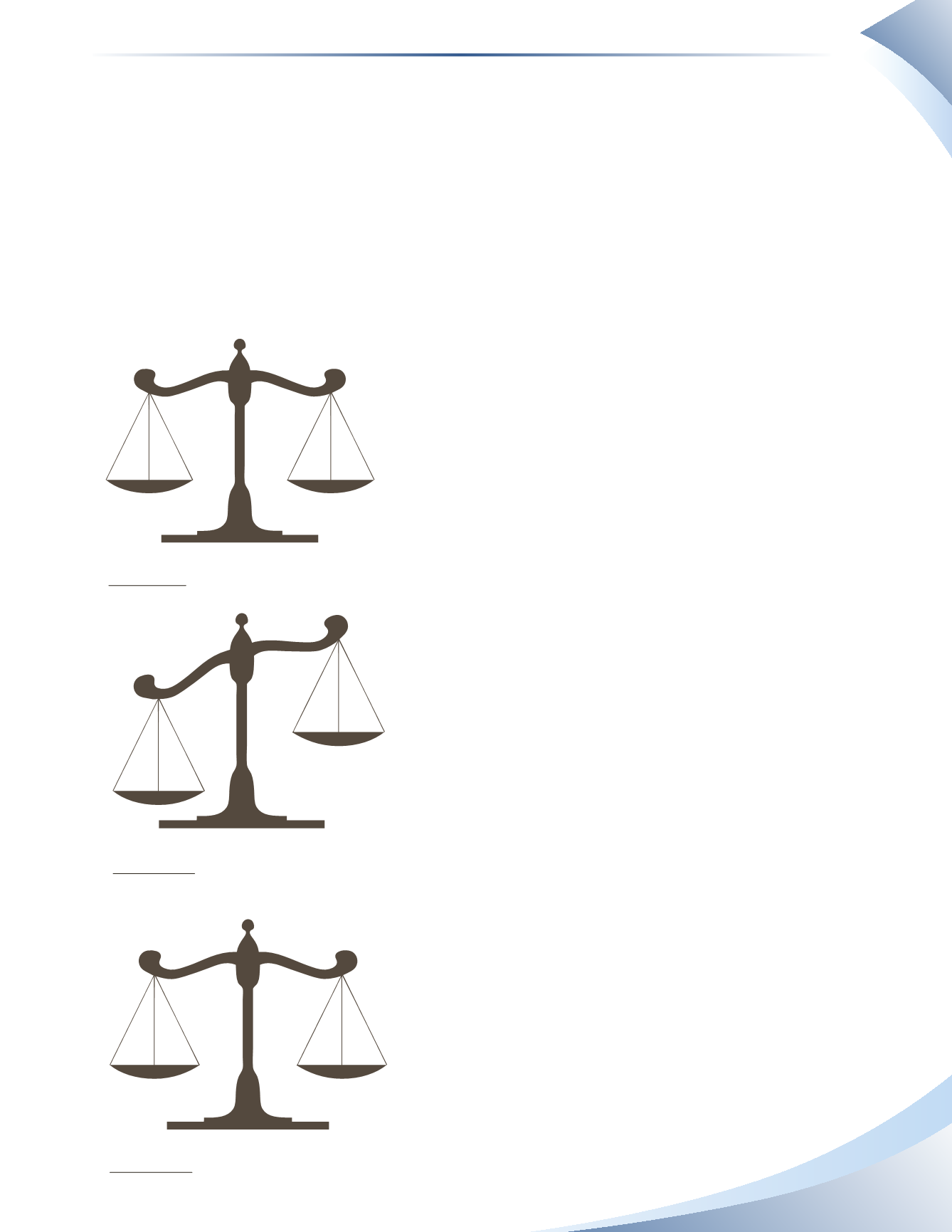
Chapter 1
Financial Statements: Personal Accounting
7
While Newton’s Third Law applies to science, the same concept can be applied to the logic of the
accounting equation: “For every action there is an equal and opposite reaction”—that is, transaction
and financial consequence. In accounting terms, a double entry of the same value is always made for
every transaction.This means that each transaction has at least two entries.The logic of the double
entry is based on the
accounting equation
Assets = Liabilities + Net Worth
Imagine the accounting equation as a scale with each side in balance; the left side of the scale
would include assets and the right side would include liabilities and net worth.
The scale must always be in balance, as shown in
Figure 1.10.
If you received $3,000 cash, it would increase your
assets. Recording only the increase in cash will
cause the scale to go out of balance, as shown in
Figure 1.11.
To get the scale back into balance, you must ask
yourself why you received the cash. If you received
the cash because you earned it at your job, then the
$3,000 must also increase net worth. This will be
recorded as revenue and bring the scale back into
balance, as shown in Figure 1.12.
Assets
122,000
Liabilities + Net Worth
80,000
+
42,000
FIGURE 1.10
Assets = Liabilities + Net Worth
$122,000 = $80,000 + $42,000
Increase cash
by
$3,000
Assets
125,000
Liabilities + Net Worth
80,000
+
42,000
FIGURE 1.11
Assets = Liabilities + Net Worth
$125,000 ≠ $80,000 + $42,000
Increase net worth
by
$3,000
(revenue)
Assets
125,000
Liabilities + Net Worth
80,000
+
45,000
FIGURE 1.12
Assets = Liabilities + Net Worth
$125,000 = $80,000 + $45,000


